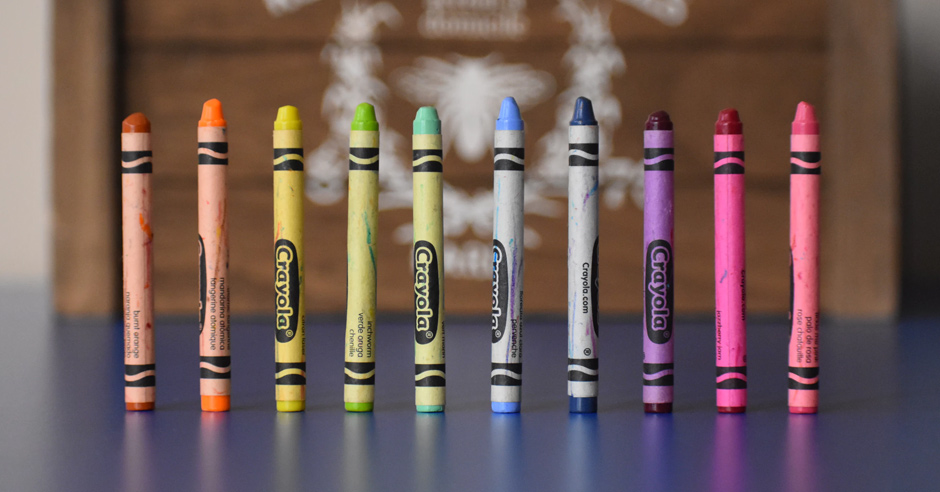
Several years ago I tackled my paper clutter. Old manuals, college papers, and notebooks went out to the recycling. I set aside sentimental papers that had begun to accumulate from our young children for later sorting. My mother, having heard me talk about this journey, felt inspired to tidy a bit. One day after a visit she mentioned that she had a tote for me to take.
When I got home and opened the exceptionally heavy box I saw five, 4” thick, three ring binders filled with papers. These binders contained every paper that had come home from my kindergarten, first, and second grade years.
Every paper.
From lunch menus to Sally Fields wrapping paper order forms, lice notices to academic worksheets. Mom had carefully three-hole-punched and filed each and every one for safekeeping.
Leafing through them, the overwhelming question was “Why had she felt the need to keep these?” The majority of them were parent notices, and the few included worksheets weren’t anything special. I can venture a few guesses regarding her “why.” These binders demonstrate her organization skills and they are tangible proof of effort and of caring. They are also things that perhaps she wishes her mother had made. While well intentioned, the binders are not how I remember my mother’s acts of caring and love. The papers within don’t hold sentimental meaning for me; I had no knowledge of them, or the binders.
After cleaning out the tote and recycling a massive amount of paperwork that I previously had no idea existed, I decided to come up with a plan for our kids. I didn’t want to hand down mountains of unimportant paperwork, or things that they don’t find memorable.
We have four children, two of whom are in elementary school, and two not yet old enough to attend school. Our two boys come home every day after school and empty the contents of their backpacks: permission forms, notices, art and miscellany pour out onto our counter. We file the kid’s paper work as it comes in, anything that has important dates gets placed on the calendar so I can transfer the information and recycle the form. Their regular worksheets get looked over; I congratulate them for a job well done, we take a moment to talk about what they learned by doing the work, and address any issues before recycling the pages.
We then talk about their artwork and they decide if they want to keep it or not. If it is large, bulky, or has lots of sticking out bits that would make it difficult to keep, I have them hold it up and I take a picture of them with their creation before letting it go. It’s important to have our child in the picture instead of simply photographing their art, it’s a lot more fun (for me, and them!) to look back on pictures when they are in them. The kids have the option to display the large/bulky art in their rooms if they vote to keep it, but I am not going to hide it away and store it for them.
Each child has a hanging file folder in my office where we add the papers that they vote to keep throughout the year to the ones we have collected previous years. At the end of each school year we have a “memory party.” We start with our oldest child’s folder and look through the accumulated contents together: handprints from toddler years, letters, drawings and paintings. He looks at and holds each item, deciding whether or not it makes the cut for the “keep” pile or if it’s placed in the “go” pile. It is important that he makes these decisions without any influence from me. Then we move on to the next child. Our youngest two will start making decisions after their first year of school, as that is when things start to really accumulate and they are mature enough to understand the process.
Things that I have attachment to, get photographed or scanned in. This process allows each child to choose the papers that are important to them, that they would like to see again, and refreshes memories about the time when it was created. It’s fun! We enjoy looking at the progress they’ve made and recalling different adventures, “Remember drawing that in Florida after our beach walk? You spotted the manatees first and felt so proud of yourself!”
In the end, each child has curated a collection of papers that they hand picked as special and meaningful to them, that grows with them as they add to and subtract from it yearly. Their rooms display the artwork they created, and that they truly enjoy looking at. Since we have fallen into the habit of sorting papers immediately as they come in, we reap the benefits of a clear space and free ourselves mentally from the task so that we can be fully present and enjoy one another.
We don’t have to hand down piles of unimportant papers to our kids. We can free up physical space now, and relieve ourselves mentally from the weight of the paper clutter in the other room.
Allow kids to make their own decisions about what to keep and what has meaning. Revisit favorites regularly and evaluate whether or not we’re holding onto something because we can’t let go of it, or because it’s truly important to our kids.
What’s significant to them may not be what we would have chosen, and that’s okay! It is important to recognize these differences and acknowledge feelings that surface as our kids choose to let go of something we would have kept. We delight in the knowledge that our children only have articles filled with memories and meaning, not a pile of papers that we were unable to let go of, or felt obligated to keep. Together, craft a capsule that has meaning.